Here’s How We’re Using Our Experience of Trauma to Help Others
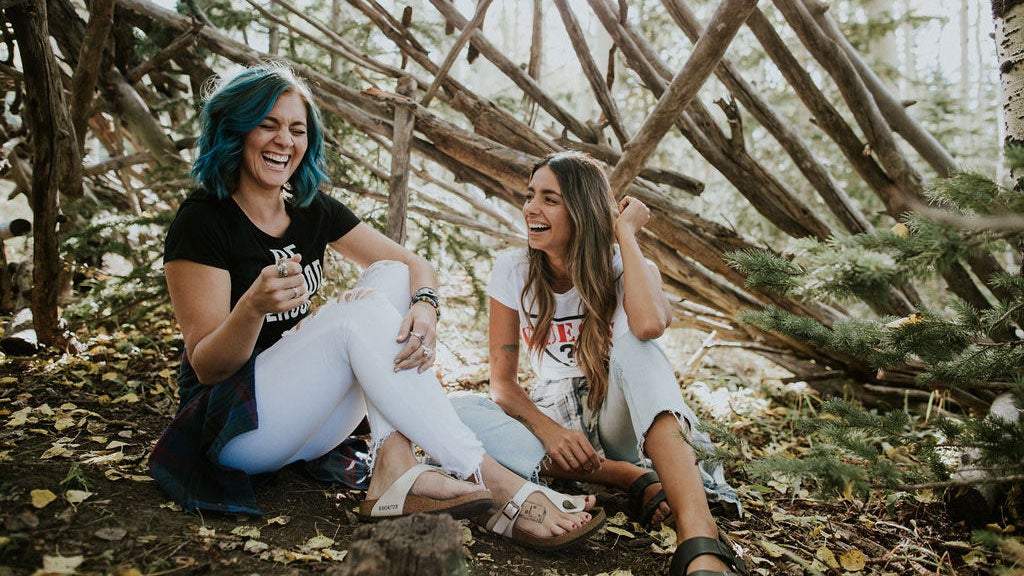
Brittany Piper and Em Geeves met when they were 9-years-old, and they were friends who felt more like sisters from the start. They had sleepovers almost every weekend, shared clothes, stayed up late talking on the phone, and snuck out of their parents’ houses to meet each other.
Then, during their freshman year of high school, Brittany’s brother Dominic was killed in a car accident. “My parents woke me up to tell me there had been an accident involving Dom and Brittany was asking only for me,” says Em. “They told me what happened while we were in the car on our way to Brittany’s house. As we rounded the corner to get to her house, I jumped out of the car, sprinted to her house, and ran through the door. Brittany was curled up on the couch, but opened her arms when she saw me.” However, their relationship faced a lot of strain—and the friends eventually grew apart.
Luckily, the girls reconnected on the five-year anniversary of Dominic’s passing, and shared stories of high points—and low ones—over the past few years. When they realized they had both experienced sexual assault and psychological trauma—and had processed what happened to each of them so differently—their reunion inspired deep healing, as well as an understanding that healing happens in unique ways.
A few years later, Em and Brittany were just as close as they were as children, and together they curated a women’s retreat called On The Mend—an effort to bring trauma survivors together with the intention to heal from the inside out. “We created this retreat so women could experience recovery in community,” says Brittany.
See also 5 Ways to Use Your Yoga Practice to Help You Deal With Trauma
Their next retreat is March 28-31 in Idyllwild, California. Click here for more details, and to apply for a 20% discount Scholarship (deadline: February 18th.) If you can’t make one of their retreats, try one or more of these poses, all of which will be incorporated into the yoga taught on retreat. “Each of these postures has a different level or variation designed to keep practitioners safe and comfortable,” says Em.
8 Poses to Help Trauma Survivors
Child’s Pose
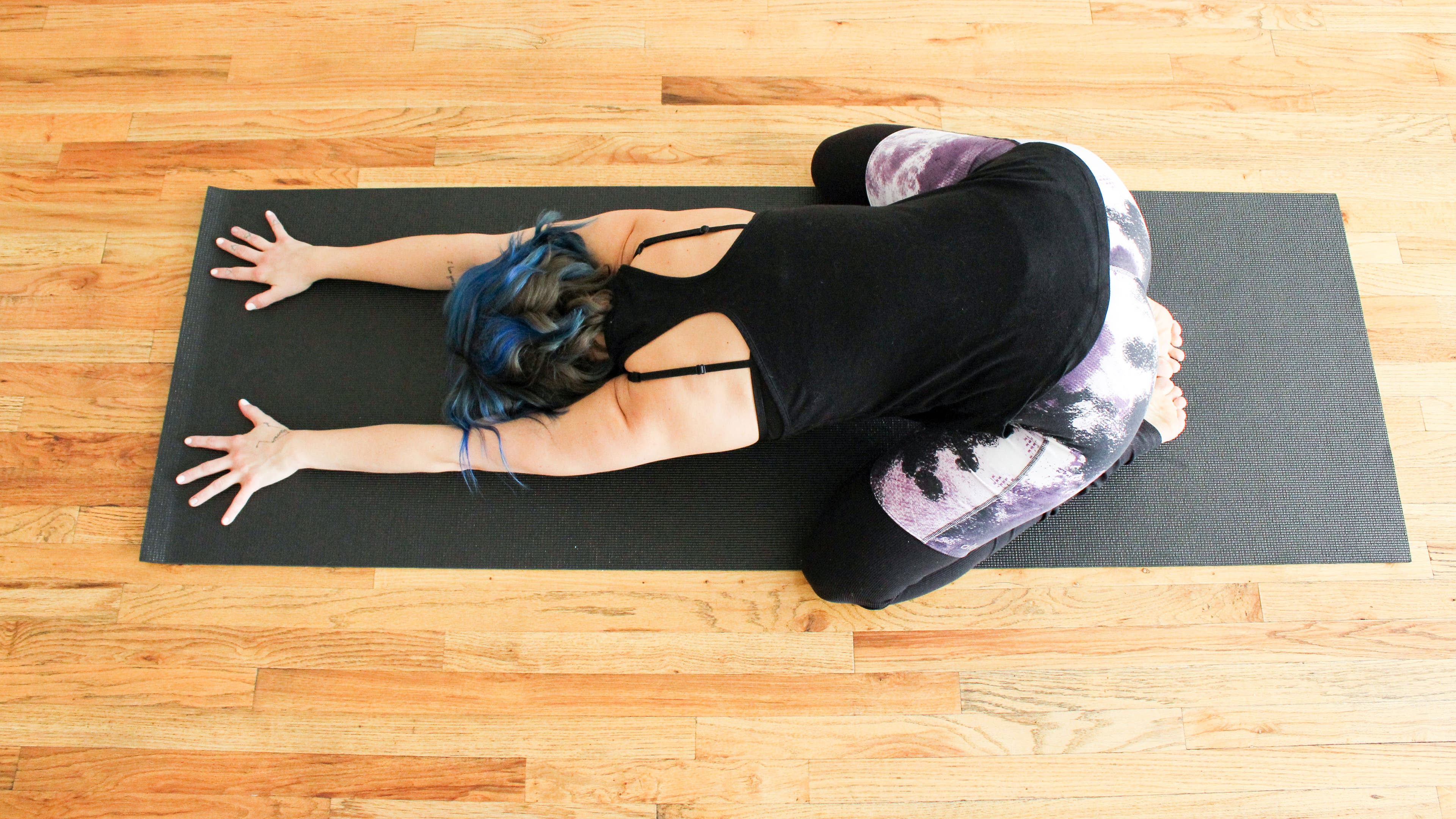
Bring your big toes to touch, knees the width of your mat, and reach your arms away from your body. Sit your hips back toward your heels and let your forehead come to the mat. Inhale into your side bodies—the space between your ribs and your low back. On each exhalation, allow your belly and chest to drop closer to the mat. “I find this pose nourishing because it’s a resting pose,” says Em. “When I come in to this shape, I know it will bring me back to the present moment.”
See also How to Lead in Challenging Times
Extended Puppy Pose
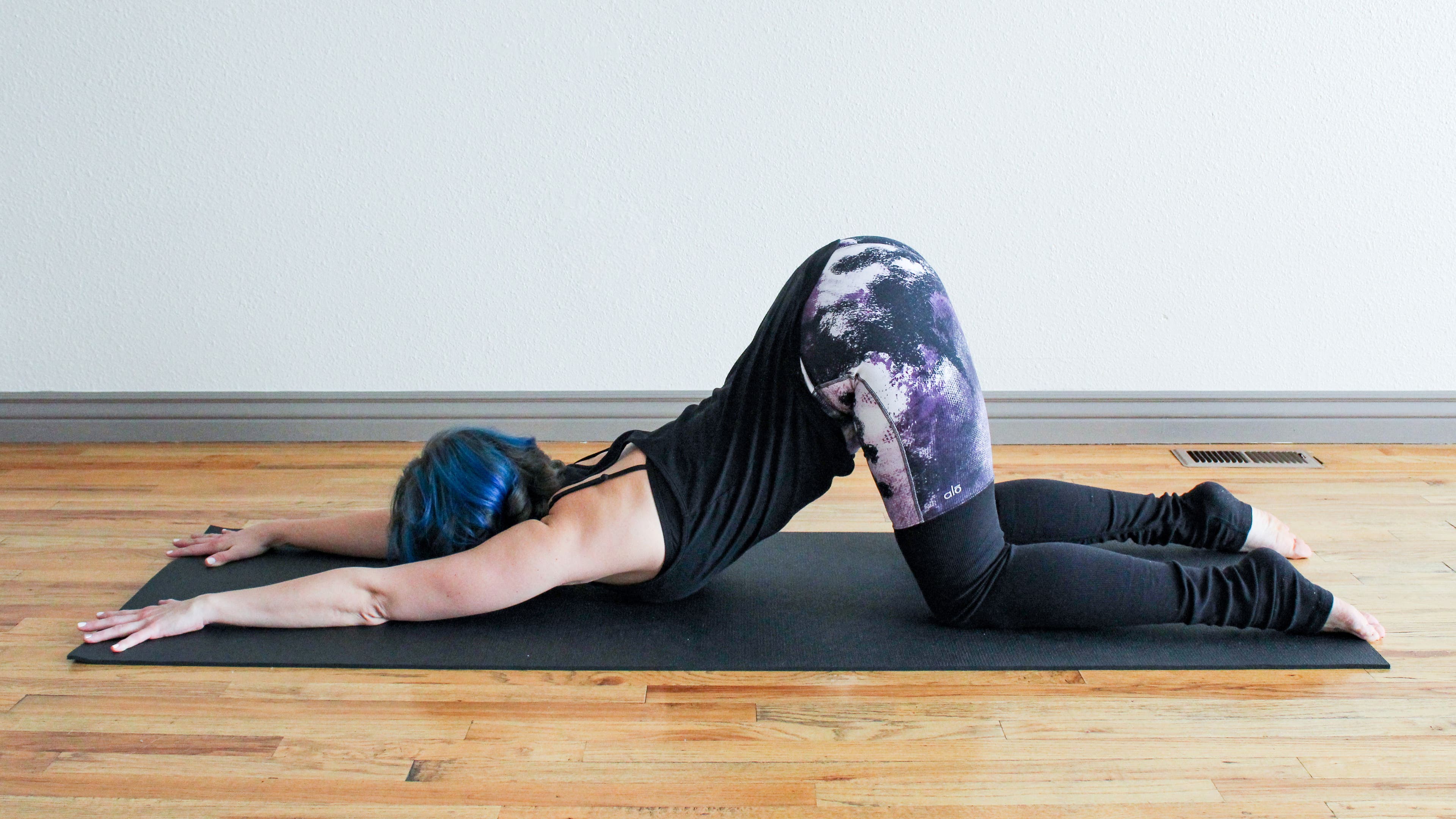
From a tabletop position, walk your hands away from your body and keep your hips stacked over your knees. Bring your forehead (or chin) to the mat, and keep your arms active by pressing your forearms and hands down. On an inhalation, expand into your back body; on an exhalation, allow your heart to settle toward the floor. “I find this pose challenging because as humans, we hold a lot of tension in our shoulders—and this shape opens up this part of the body,” says Em.
See also How to Talk About Tough Stuff in Your Yoga Classes
Downward-Facing Dog
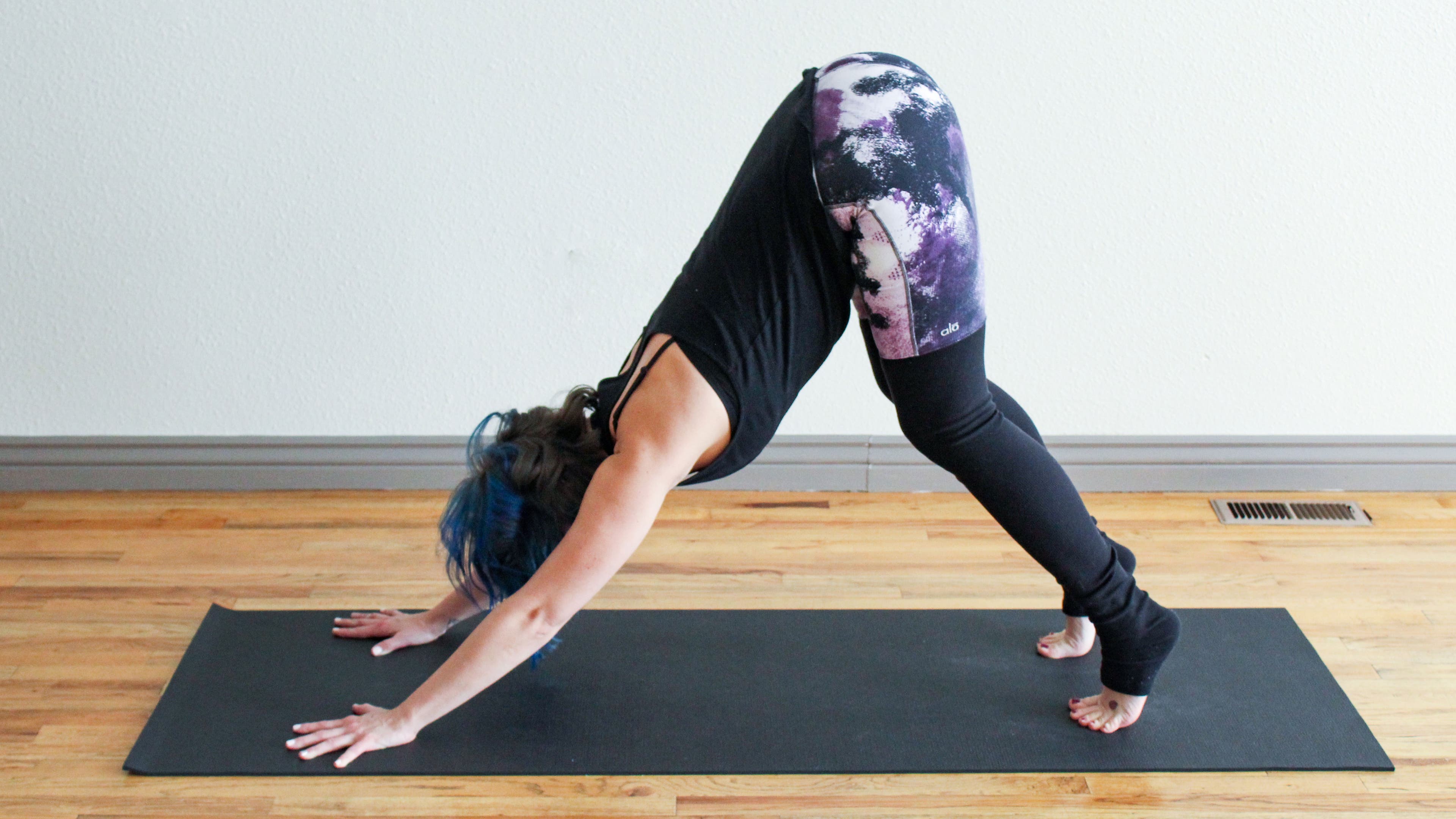
Keep a soft bend in your knees to encourage your tailbone to point up toward the ceiling, elongating the spine. Press the space between your shoulder blades up toward the ceiling, and press down into your hands, knuckles, and fingertips. Keep your neck neutral while your eyes look to the middle of your mat. On an inhalation, press the ground away from you; on an exhalation, encourage your heels to come closer to the floor. “This pose is another resting pose, and I find it to be relieving,” says Em. “It allows me to slow my breath in a way that brings me back to a restful state.”
See also How Yoga Teacher Training Helped Me Find Healing Courage When I Needed it Most
Chair Pose
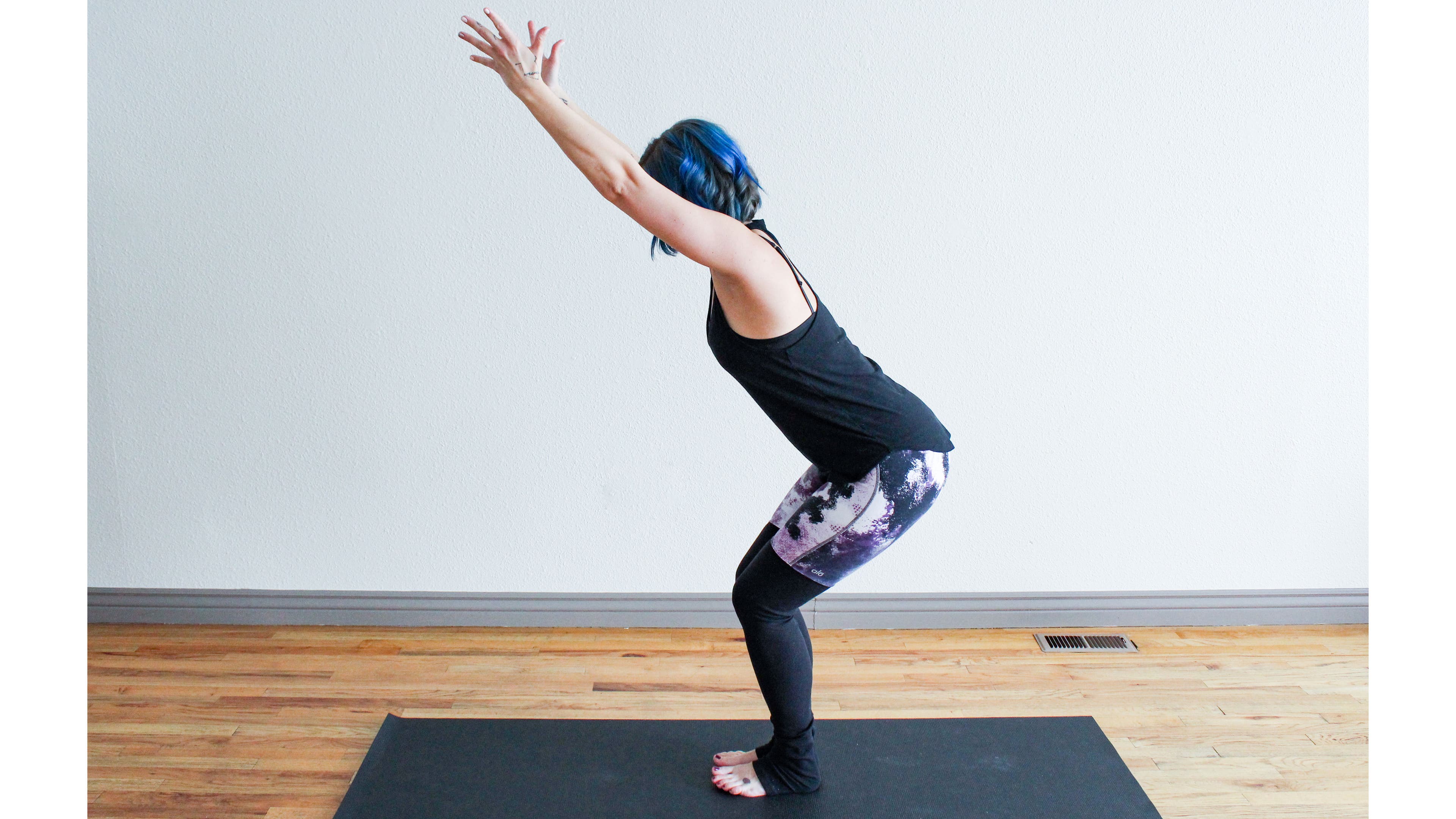
Shift the weight in your feet toward your heels and keep your knees stacked you’re your ankles as you sit back. Hug your belly button up and back toward your spine, and encourage your tailbone to reach down toward the ground. Draw your lower ribs in toward the belly to activate your core. Reach your fingertips up toward the ceiling and rotate your pinky fingers in so your biceps frame your ears. On an inhalation, reach your fingertips away from your shoulders; on an exhalation, sit back and down a little deeper. “This pose is grounding and creates heat at the same time,” says Em. “It’s a pose that strengthens the body and mind.”
See also Sarah Platt-Finger’s Self-Care Practice for Survivors of Sexual Assault
Warrior II
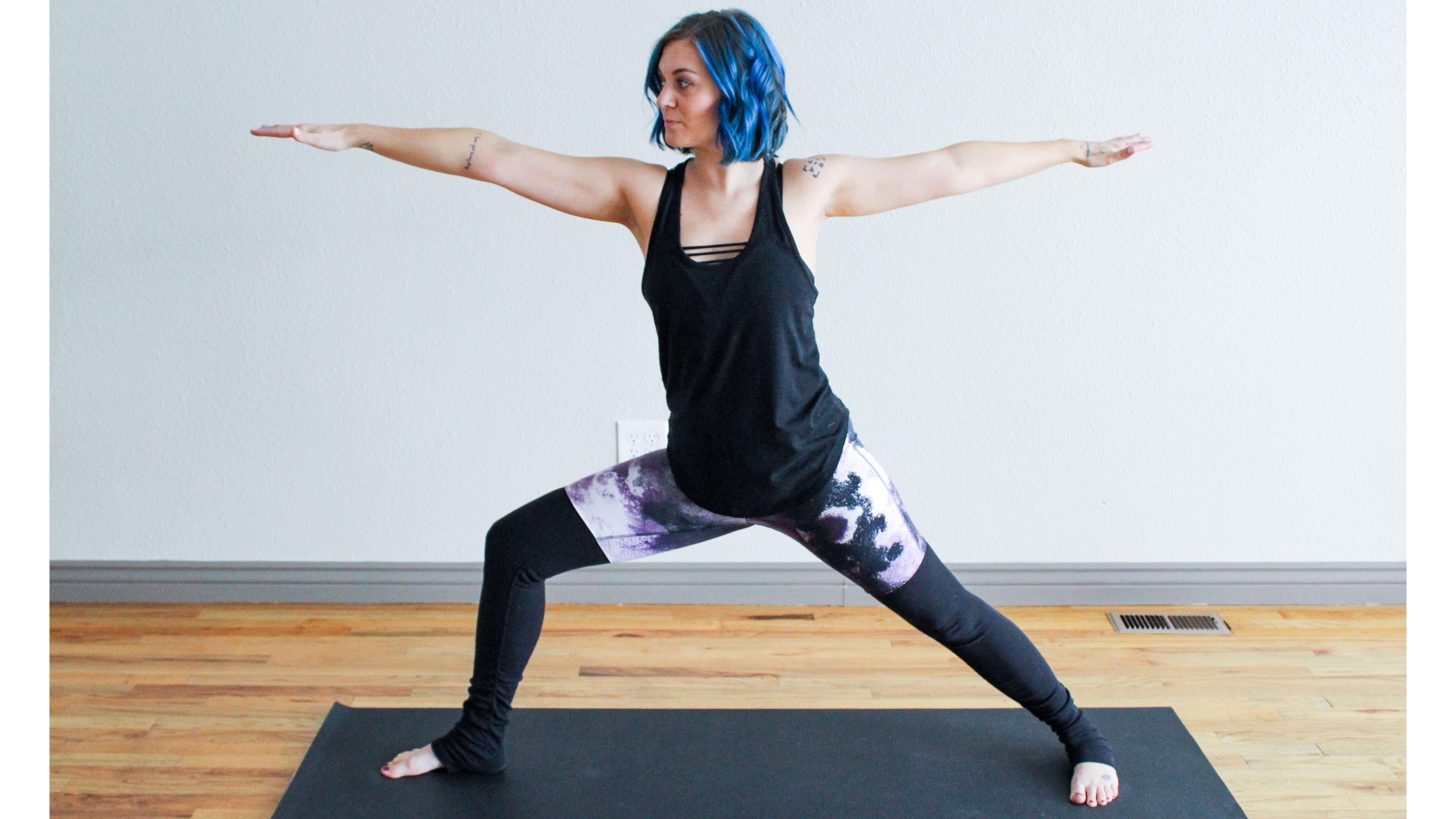
From a wide-legged stance, place your front foot so it faces forward, with your front knee stacked over your ankle and in line with your second and third toes. Rotate your back foot in slightly. (Your foot, knee, and hip should be in the same line.) Anchor your weight into both feet evenly and draw your belly button up and back toward the spine. Reach your arms away from each other and out to a T-shape, and focus your eyes across the top of the front hand. On each inhalation, reach your arms farther away from each other; on your exhalations, bend a little more into the front knee. “This pose requires a lot of focus, and it is easy to let the mind wander here,” says Em. “I think that element makes it challenging.”
See also How to Work with Yoga Students Who’ve Experienced Trauma
Eagle Pose
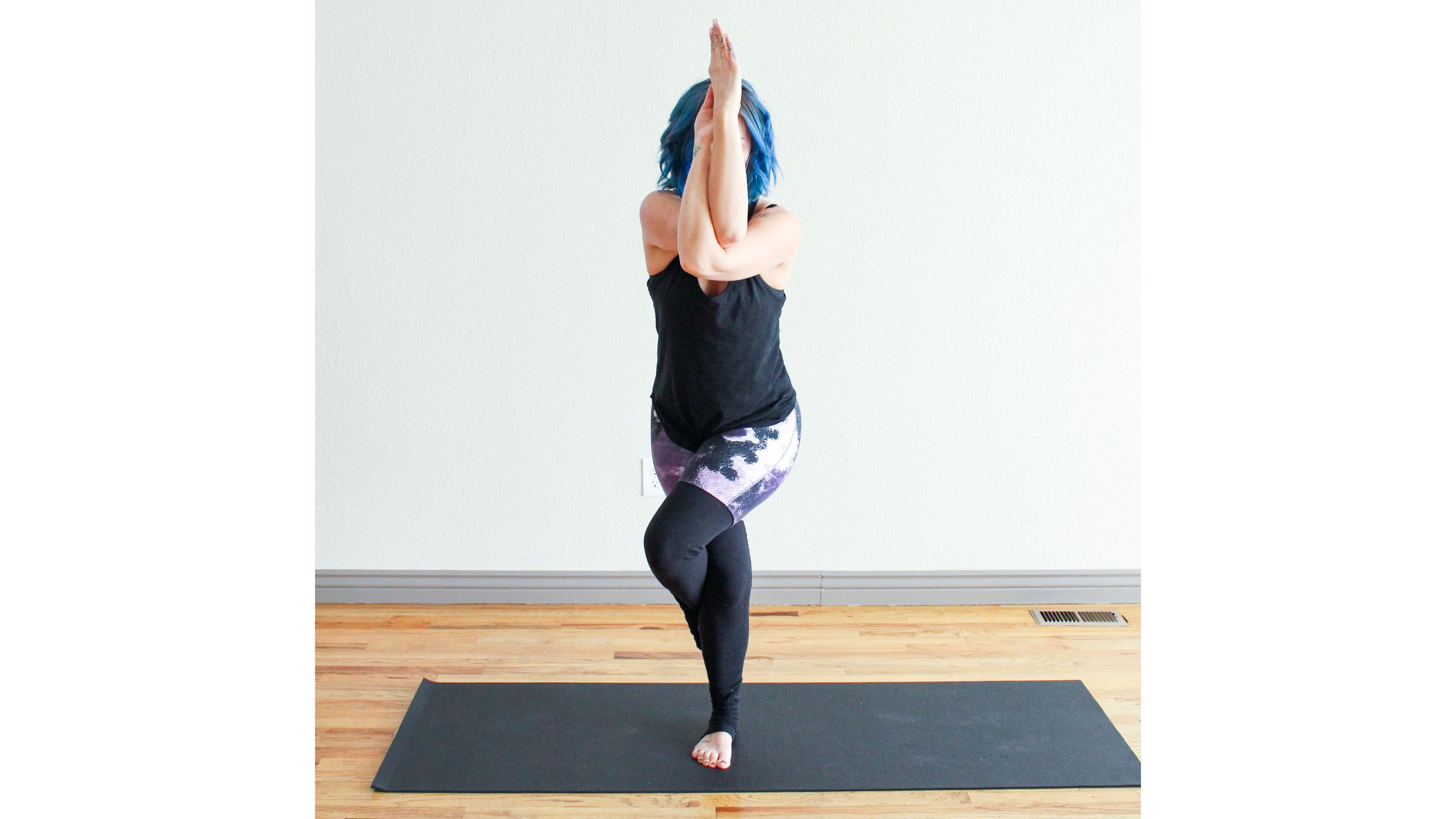
Root through all four corners of your right foot. Wrap your left leg over your right leg, and then wrap your left foot around your right ankle. Squeeze your thighs together and draw your belly button up and back toward the spine. Wrap your left arm under the right and bring your palms (or back of your hands) to touch. Reach your fingertips toward the ceiling and feel your shoulder blades glide down your back. On the inhalation, squeeze your thighs and arms together; on each exhalation, sit a little bit deeper. Then, repeat on your opposite leg. “I find this pose to be frustrating but rewarding,” says Em. “It requires slow, intentional movements with the breath as well as the mind. It’s a wonderful pose to practice staying present.”
See also 10 Ways to be Fearless in the Face of Grief and Loss
Headstand

From Extended Puppy Pose (at a wall), clasp your hands together so both pinkies are pressing down into the mat evenly. Bring the top of your head between your hands and walk your feet toward the body until you find tiptoes. Extend one leg at a time. Shift your weight forward, onto your forearms and head, hugging your elbows in toward each other. Hug your knees in toward your body, until your hips stack above your shoulders. Activate your core by drawing your belly button up and back toward the spine. Extend one leg, then the other, so your feet are stacked above your hips and shoulders. On an inhalation, zip up your legs and press up through your feet; on an exhalation, draw your belly button back toward your spine. “I find this pose to be the most humbling, and one that keeps me the most in sync with my breath,” says Em. “In a world of instant gratification, this pose offers a reminder that the practice you put in truly shows the results you get out.
See also The Dark Side of Meditation: How to Avoid Getting Stuck with Pain From the Past
Constructive Rest
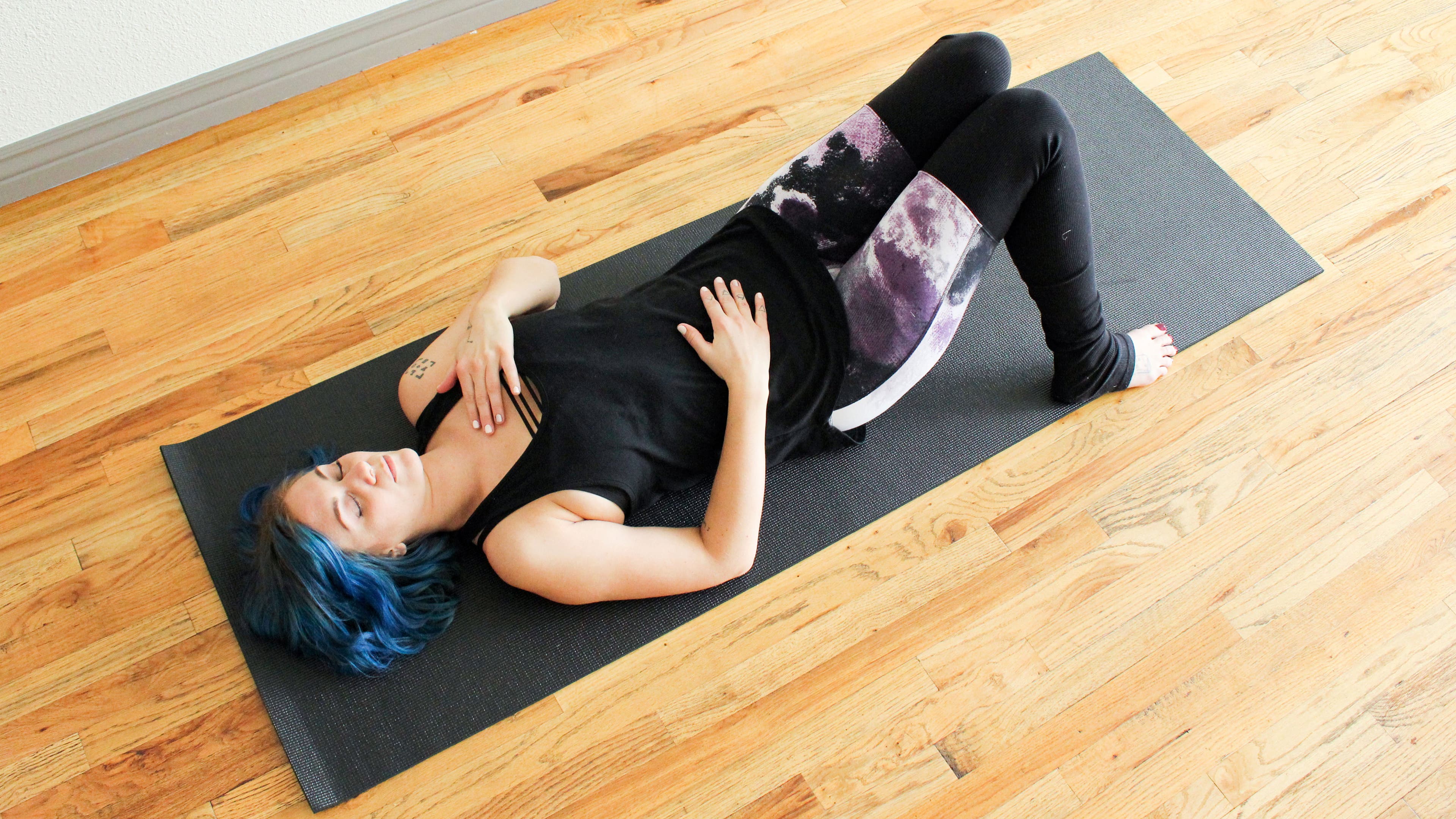
Lie flat on your back, knees bent, soles of your feet on the outer edges of your mat. Knock your knees in toward each other to release your low back. Relax your neck and shoulders and bring one hand to your heart and the other to your belly. Close your eyes. On each inhalation, feel your hands rise as you expand your front body and chest. On each exhalation, allow your body to be heavy. “I find this pose to be soothing,” says Em. “The weight of your hands on your body can be calming. It also brings your awareness to your physical space, as well as your physical body.”
See also Research Shows Trauma-Informed Yoga Helps Girls in the Juvenile Justice System Heal